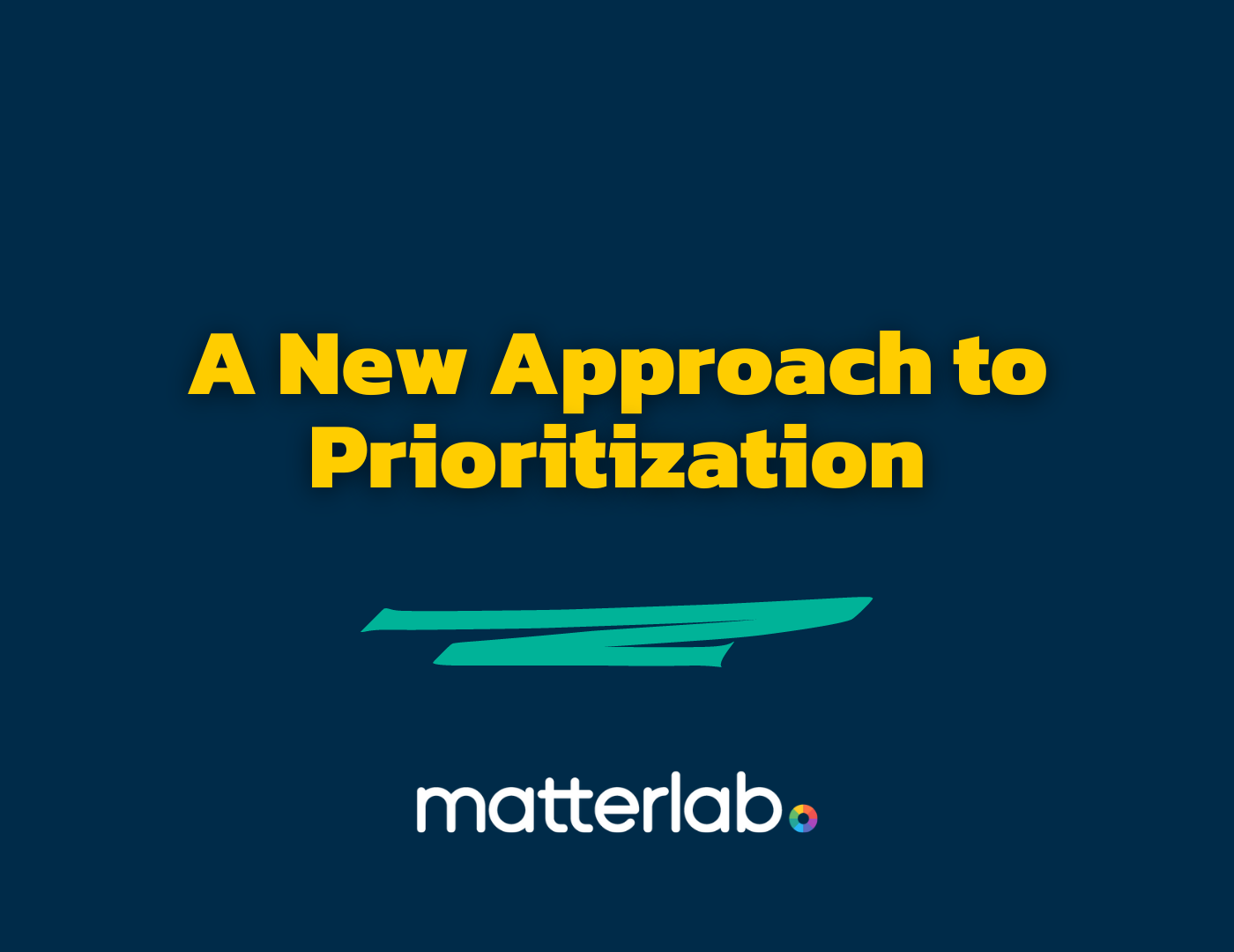Google “prioritization” and you’ll find hundreds of thousands of results that overwhelmingly fall into one of these two categories:
- Category A: Techniques for more effectively ranking your tasks in order of importance relative to one another
- Category B: How to develop the discipline to do your most important task first
Consider Category A – right away, you’re prompted to make space in your mind for every single to-do you’ve got, and chances are, you’ve flooded the engine. You’ve lost before you even started.
Consider Category B – it presupposes that you’ve accurately identified what that most important task really is. And that’s precisely where most of us struggle…
Here at Matterlab one of our core values is to Seek simplicity, and that’s how we approach prioritization. Most of us have a tendency to overcomplicate things, and that compromises our ability to have as big of an impact as possible. So, we push ourselves every day to keep it simple. When it comes to effective prioritization, we have two key principles:
- Priority is a singular word. It cannot be made plural.
- The hardest part – and the best investment in impact – is figuring out what to focus on.
Priority is a singular word. It cannot be made plural.
This is as simple as it sounds. No matter the temptation, no matter the compelling case you may have – there can be no such thing as plural priorities. At any given moment in time, you can have one and only one priority. This is hard. This feels unnatural. But this is immutable. Your mind will work against you in compelling and convoluted attempts to convince you that in fact you do have multiple priorities! This one time! Or, for this really good reason! But it’s simple: Priority is a singular word. What you need is acceptance, not exceptions to the rule. Once you accept that priority is a singular word, then you can begin developing the discipline required to live this principle.
The hardest part – and the best investment in impact – is figuring out what to focus on.
What’s better – ten minutes spent making a to-do list for the day and 7 hours spent on minimally-impactful execution of the list from top to bottom, or two hours spent in deep thought about your main goals and how to get there, followed by four hours focused on the true priority you’ve identified and an hour left over to tackle assorted tasks – many of which won’t get done until tomorrow? It’s a false dilemma (there are a hundred and one ways to structure your day), but it paints an important picture about prioritization. Time is a precious, finite resource, and most of us waste it on low- to mid-impact tasks. The hardest part of prioritization is figuring out what to focus on. It requires deep thought – the one true superpower of species and something that is sadly out of style in most modern workplaces.
If you begin to internalize these two simple principles, you are starting down the path to the type of truly effective prioritization that can help you accomplish your goals with greater impact and in less time than you thought possible.

